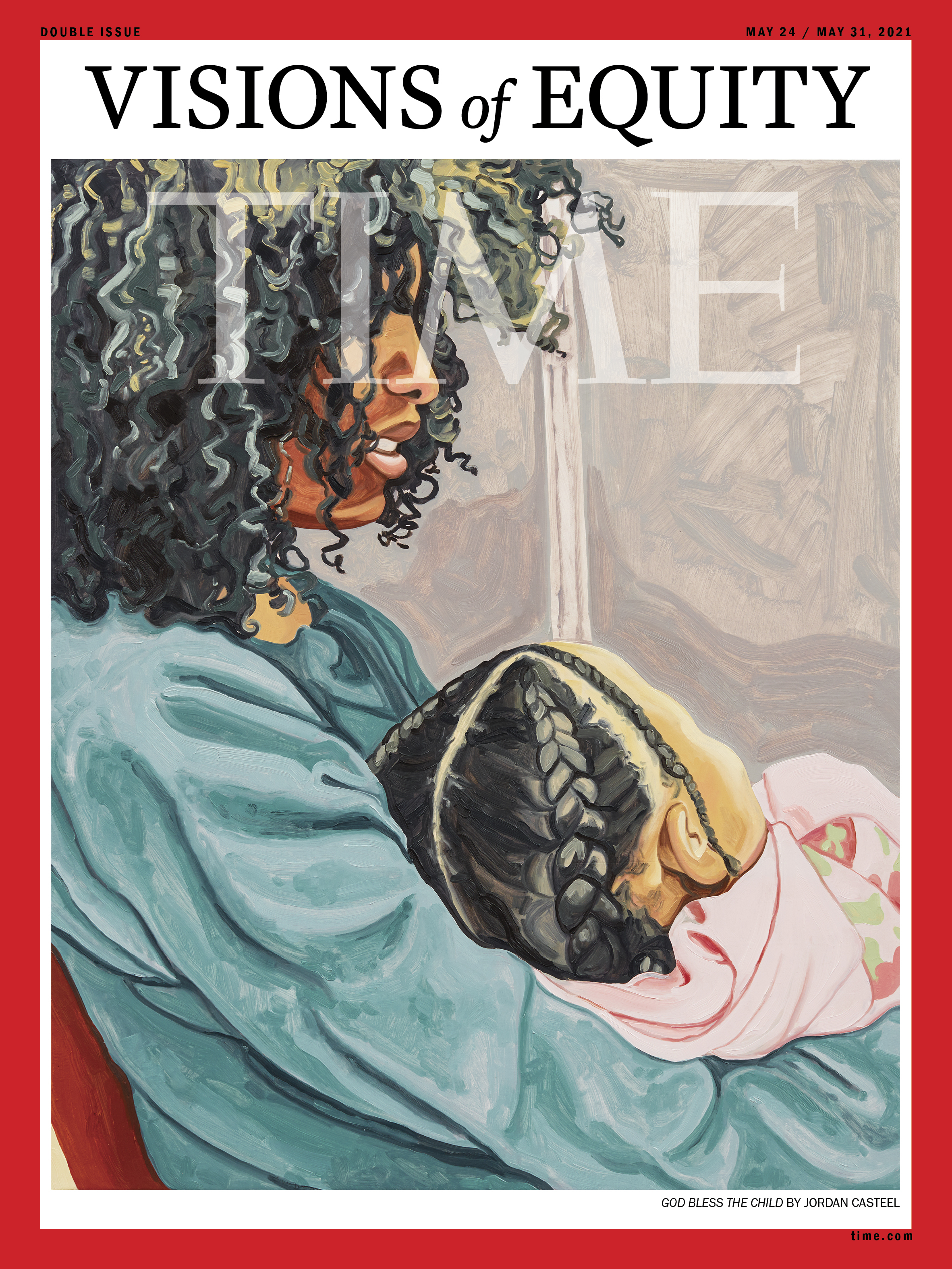
A year ago, we at TIME started talking about the ways we’ve fallen short.
Soon after George Floyd was murdered in Minneapolis, staffers from across the organization began sharing painful memories of being mistreated in our workplace and demanding change. I called Edward, our editor-in-chief, whose words you usually read in this space, to ask if he would consider inviting the people in our newsroom who identify as Black, Indigenous and people of color to lead our coverage of racial justice. For all of our focus on telling stories about the need for diversity and inclusion, we needed a push toward centering the voices of our own staff in that work; this was just one of many shifts in perspective we’ve held one another accountable for making over the past year. The result of that conversation is this week’s cover package, Visions of Equity. It’s the first of its kind for TIME—a project dreamed up and led by BIPOC staff.
We begin with a reality check on American history from senior correspondent Janell Ross, who argues that the country is stuck in a pattern of talking about racial inequality but doing little to solve it. Examining the data, staff writer Andrew R. Chow asks why the rate of police killings has not changed since Floyd was killed. And a team of reporters from around the world, led by Naina Bajekal, our editorial director for newsroom development and a leader on the project, tracks movements for justice in eight nations that have gained momentum over the past year.
From there, we look forward. Executive editor John Simons interviews two business leaders about the challenge of pushing institutions in a new direction. To capture the solidarity and joy that can be found in communities of color—which are so often depicted by the media through the lens of pain and trauma—we follow members of five BIPOC “pods” that have become sources of ongoing strength for one another.
Our centerpiece is the Equity Agenda, a list of 40 ways for the U.S. to become a safer, more equitable nation. To make the list, a team led by associate editor Mahita Gajanan consulted with dozens of experts, leaders and innovators, from Fred Hampton Jr. to Tarana Burke to Dr. Rachel Levine, all of whom also wrote for the package. Editorial producer Nadia Suleman provided leadership and guidance from the project’s start and served as a managing editor.
To close, TIME journalists reflect on the complex experience of covering stories about people who share their identities—and articulate the lessons they will carry onward throughout their careers. These essays mean the most to me personally, as they honor the range of my colleagues’ perspectives and speak to their growth over the past year. I value the honesty in these pieces when it comes to the fact that we still have work to do. One of the biggest challenges of this project was contending with the obstacles to representation and inclusion that exist not only in our newsroom but also in our industry at large—as international art director Victor Williams and director of photography Katherine Pomerantz, also leaders of the issue, experienced in seeking visuals for these stories. They found that while images of injustice abound, images that can represent equity are harder to define, and artists of color have rarely been supported in pursuit of that work. We are thrilled to feature Jordan Casteel’s intimate and hopeful painting God Bless the Child on our cover and were understanding when it came to the need to earn her trust. “Pushing for equity and all it entails is hard,” Casteel says. “I want to be sure that my work is valued and remarkable for the qualities it has.”
Evolving our newsroom starts by asking for space and centering fresh voices within it. In her reflective piece—her first essay for TIME—my colleague Jenna Caldwell, a production associate, offers an enduring lesson. “Advocating on behalf of yourself isn’t something you learn in school,” she writes. “It’s something you can truly learn only by witnessing how it’s done up close.”
More Must-Reads from TIME
- Inside Elon Musk’s War on Washington
- Meet the 2025 Women of the Year
- The Harsh Truth About Disability Inclusion
- Why Do More Young Adults Have Cancer?
- Colman Domingo Leads With Radical Love
- How to Get Better at Doing Things Alone
- Cecily Strong on Goober the Clown
- Column: The Rise of America’s Broligarchy
Write to Lucy Feldman at lucy.feldman@time.com